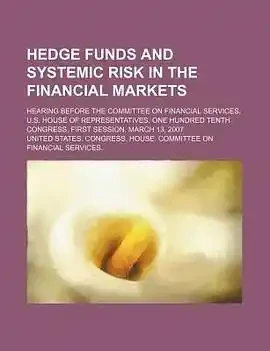


========================================================
Hedge funds have long been known for using sophisticated financial instruments to generate returns while managing risk. One such instrument is swaps, which are commonly used for hedging, arbitrage, and enhancing portfolio performance. In this article, we will delve deep into how hedge funds using swaps operate, explore the different strategies they employ, and examine the associated risks and rewards. By the end, you will understand how swaps play a pivotal role in hedge fund management, and how they can be used effectively for risk mitigation and portfolio optimization.
- What Are Swaps?
———————-
1.1 Definition and Types of Swaps
A swap is a financial derivative contract where two parties agree to exchange cash flows or other financial instruments over a predetermined period. These cash flows are typically tied to underlying assets, such as interest rates, commodities, or currencies. The two most common types of swaps used by hedge funds are:
- Interest Rate Swaps (IRS): These swaps involve the exchange of fixed interest rate payments for floating-rate payments based on a reference rate such as LIBOR (London Interbank Offered Rate).
- Currency Swaps: These involve the exchange of cash flows in different currencies, allowing parties to manage foreign exchange risk.
1.2 Why Hedge Funds Use Swaps
Hedge funds use swaps for various reasons:
- Hedging Against Risk: Swaps provide hedge funds with the ability to protect themselves from adverse price movements in interest rates, foreign exchange rates, or commodity prices.
- Enhanced Returns: Swaps can be used to gain exposure to different assets without actually purchasing them, which can increase leverage and potentially enhance returns.
- Portfolio Diversification: By using swaps, hedge funds can gain exposure to markets or asset classes that they otherwise would not be able to access directly.
- Arbitrage Opportunities: Hedge funds can use swaps to take advantage of pricing inefficiencies across different markets.
- Strategies Used by Hedge Funds with Swaps
————————————————
2.1 Hedging Interest Rate Risk
Interest rate swaps are commonly used by hedge funds to manage interest rate risk. This can involve:
- Fixed-to-Floating Swap: In this strategy, a hedge fund might swap a fixed interest rate for a floating rate if it anticipates that interest rates will decline, allowing it to benefit from the lower rate.
- Floating-to-Fixed Swap: On the other hand, if a hedge fund believes that interest rates will rise, it may swap a floating interest rate for a fixed rate to lock in lower borrowing costs.
Example:
A hedge fund holding debt with a floating interest rate might enter into a fixed-to-floating swap to lock in a fixed rate, thus protecting itself from potential rate hikes.
2.2 Currency Swaps for Currency Exposure
Currency swaps are used to manage foreign exchange risk. Hedge funds may enter into currency swaps for the following reasons:
- To hedge against currency fluctuations: For hedge funds that hold international assets or liabilities, currency swaps can mitigate the risk of exchange rate fluctuations.
- To gain exposure to foreign markets: Currency swaps provide hedge funds with an efficient way to gain exposure to foreign currencies without having to buy or sell the actual currency.
Example:
A hedge fund holding a significant amount of U.S. dollar-denominated assets might enter into a currency swap with a European counterparty to hedge its exposure to fluctuations in the euro.
2.3 Total Return Swaps (TRS) for Synthetic Exposure
Total Return Swaps (TRS) allow hedge funds to gain synthetic exposure to assets, such as equities, without having to own them directly. In a TRS, one party agrees to pay the total return (capital gains + dividends) of an asset to another party in exchange for a fixed or floating payment.
Pros:
- No Direct Ownership: This strategy allows hedge funds to take positions in assets without owning them outright, thus avoiding costs like transaction fees and capital gains taxes.
- Leverage: Hedge funds can use TRS to gain leveraged exposure to assets with a small initial investment.
Cons:
- Counterparty Risk: The primary risk with TRS is the counterparty defaulting on the agreement, which can lead to significant financial loss.
- Benefits of Hedge Funds Using Swaps
——————————————
3.1 Risk Management
One of the primary reasons hedge funds use swaps is to manage various types of financial risks:
- Interest Rate Risk: Using interest rate swaps, hedge funds can protect themselves from sudden interest rate fluctuations that could negatively impact their fixed-income positions.
- Currency Risk: Currency swaps enable hedge funds to hedge against currency risk, which is particularly important for funds with global exposure.
3.2 Leverage and Return Enhancement
Swaps, particularly Total Return Swaps, allow hedge funds to leverage their positions without having to own the underlying assets. This can lead to amplified returns, but it also comes with increased risk.
3.3 Diversification of Portfolio
Using swaps enables hedge funds to diversify their portfolios in ways that may not be possible through traditional methods. By gaining exposure to different asset classes or markets, hedge funds can reduce correlation with their other investments, improving overall portfolio performance.
- Risks of Hedge Funds Using Swaps
—————————————
4.1 Counterparty Risk
A key risk in swaps is counterparty risk—the risk that the other party in the contract defaults. If this happens, the hedge fund may face significant losses. To mitigate this, many hedge funds enter into swaps with highly rated counterparties or use central clearing houses to manage the risk.
4.2 Market Risk
Despite being a tool for hedging, swaps also introduce market risk. If the market moves unfavorably (e.g., interest rates or currency exchange rates move contrary to expectations), the hedge fund may incur significant losses.
4.3 Liquidity Risk
Swaps are generally less liquid than traditional financial instruments like stocks or bonds. In certain market conditions, it may be difficult for hedge funds to exit swap positions without incurring significant costs.
- FAQ: Hedge Funds Using Swaps
———————————–
5.1 How do hedge funds use swaps to enhance their portfolios?
Hedge funds use swaps, particularly Total Return Swaps, to gain exposure to various assets without owning them directly. This strategy allows them to increase leverage and enhance returns. For instance, a hedge fund might use a TRS to take a position in a specific stock or index, amplifying its exposure to that asset’s price movements.
5.2 What is the most common swap strategy used by hedge funds?
The interest rate swap is one of the most common strategies used by hedge funds. This swap allows them to manage exposure to interest rate movements, which is critical for funds that hold a significant amount of debt or fixed-income securities.
5.3 What are the risks associated with hedge funds using swaps?
Hedge funds face several risks when using swaps, including counterparty risk, market risk, and liquidity risk. These risks can be mitigated by carefully selecting counterparties, using central clearing mechanisms, and ensuring that swap positions are properly managed and monitored.
- Conclusion
—————–
Hedge funds use swaps as powerful tools to manage risk, enhance returns, and diversify portfolios. By utilizing strategies such as interest rate swaps, currency swaps, and Total Return Swaps, hedge funds can effectively navigate market volatility and create synthetic exposure to various asset classes. However, it is important to understand the risks, including counterparty and market risks, when incorporating swaps into a portfolio.
If you’re looking to learn more about how swaps work in hedge funds or are interested in developing your own swap strategies, be sure to explore additional resources and case studies on swaps in financial markets.

0 Comments
Leave a Comment